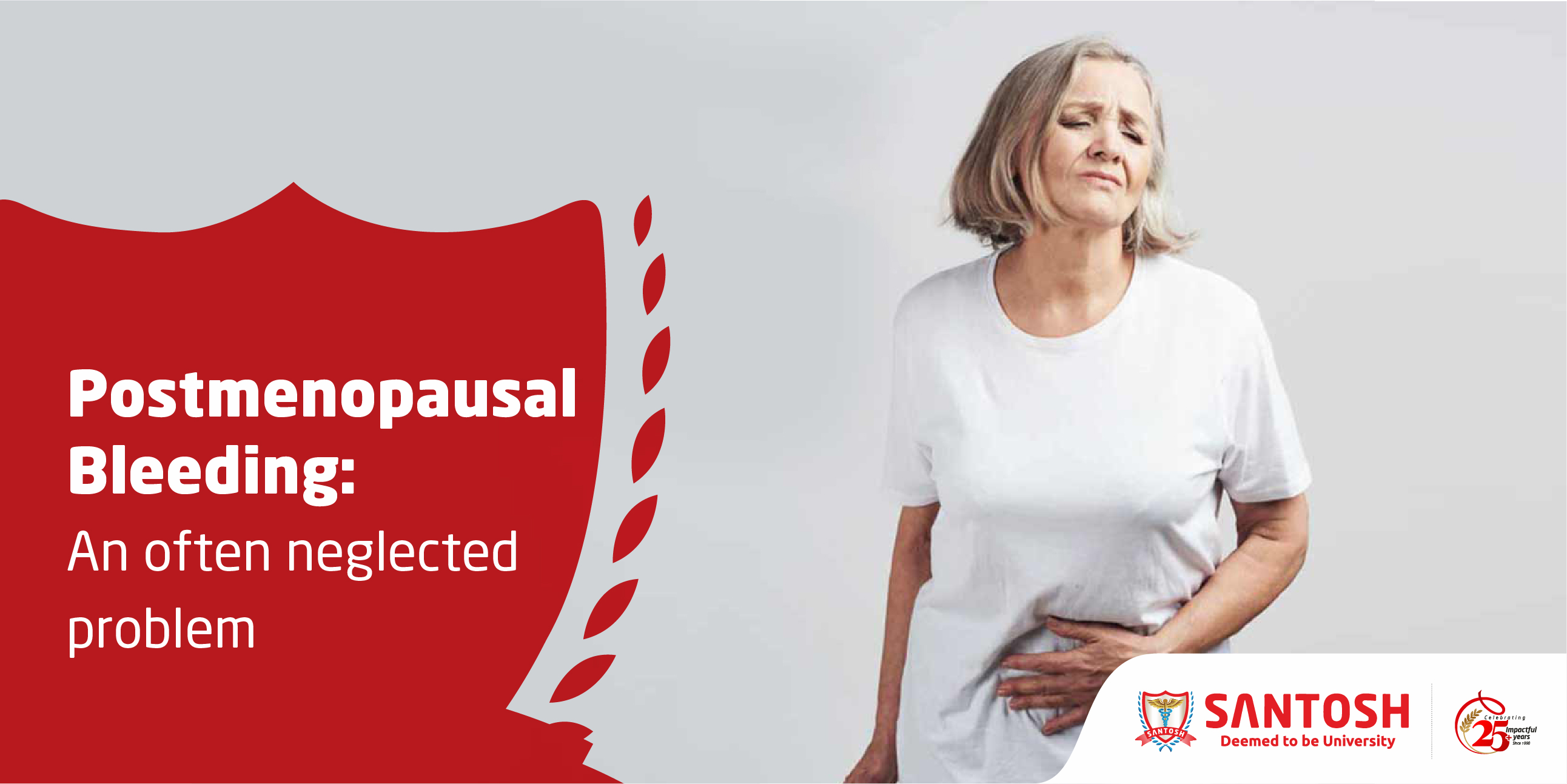
Menopause is the phase of life starts with stoppage of menstruation. It occurs when a woman has not had her menstrual period for a year. This is due to decline in hormones and women experience it normally in their 40s or 50s.
After menopause, women normally do not expect to have any vaginal bleeding. However, about 4-11% of postmenopausal women may experience vaginal bleeding, for which they should contact their gynaecologist.
The clinical approach to postmenopausal bleeding requires prompt and efficient evaluation to exclude or diagnose endometrial carcinoma and endometrial intraepithelial neoplasia.
Postmenopausal bleeding can be due to a number of causes. The most common causes include:
1.Endometrial atrophy: In post-menopausal women, endometrial linning is thinner, in comparison to women in reproductive age group, due to deficiency of estrogen hormone. As a result, endometrium becomes more prone to infections and bleeding.
2.Endometrial hyperplasia: This condition leads to increased thickness of endometrial lining which results in heavy or irregular bleeding. This may occur, most commonly, due to presence of excess estrogen with absence of progesterone. Endometrial hyperplasia can progress to development of endometrial cancer.
3.Endometrial cancer: This is cancer of the endometrial lining. About 1-14% of postmenopausal bleeding cases are due to endometrial cancer.
4.Polyps: Polyps are growths developing from the inner lining of the uterus or cervix. They are usually noncancerous. Polyps may cause irregular spotting, post-coital bleeding and sometimes may lead to heavy bleeding.
Other potential, but less likely, causes of postmenopausal bleeding include:
1.Clotting problems
2.Infection of the endometrium, known as endometritis
3.Trauma to the pelvis
4.Bleeding from the urinary tract
5.Hormone medications, such as tamoxifen, may also cause postmenopausal bleeding as a side effect.
6.Women on hormone replacement therapy may have breakthrough bleeding.
Diagnosis
A gynaecologist will start evaluation of patient presenting with postmenopausal bleeding by asking about:
1.Duration of menopause
2.Time and duration of start of symptoms
3.Amount of bleeding
4.Any family history of postmenopausal bleeding
5.Family history of any type of cancer
Depending upon the history, one or more tests may be needed.
1.Endometrial biopsy: In this procedure, a sample of endometrium is collected and then tested for the presence of abnormal cells, such as cancer cells.
2.Hysteroscopy: This technique provides direct visualization of the uterine cavity to see for polyp or any abnormal growth inside the uterus.
3.Transvaginal ultrasound: This investigation is done by putting Ultrasound probe inside the vagina and visualizing the uterus and ovaries more clearly.
Treatment options
Treatments for postmenopausal bleeding often depend upon the underlying cause associated with the bleeding:
1.Polyps: Surgical removal of the polyps is needed.
2.Endometrial cancer: Treatment of endometrial cancer depends on its type and stage, according to which only removal of uterus can be done or if advanced stage, then radiotherapy and chemotherapy may be needed.
3.Endometrial hyperplasia: This can be treated with oral hormonal medications or progesterone containing intra-uterine devices. Progesterone, in high doses for long time, reduces the thickness of endometrium, and thus reducing the chance of its progression to endometrial cancer.
Post-menopausal bleeding is the condition which may be a benign one or malignant. Thus, delayed treatment may be detrimental to the life of the patient.
For More Info, Visit: https://www.santosh.ac.in/